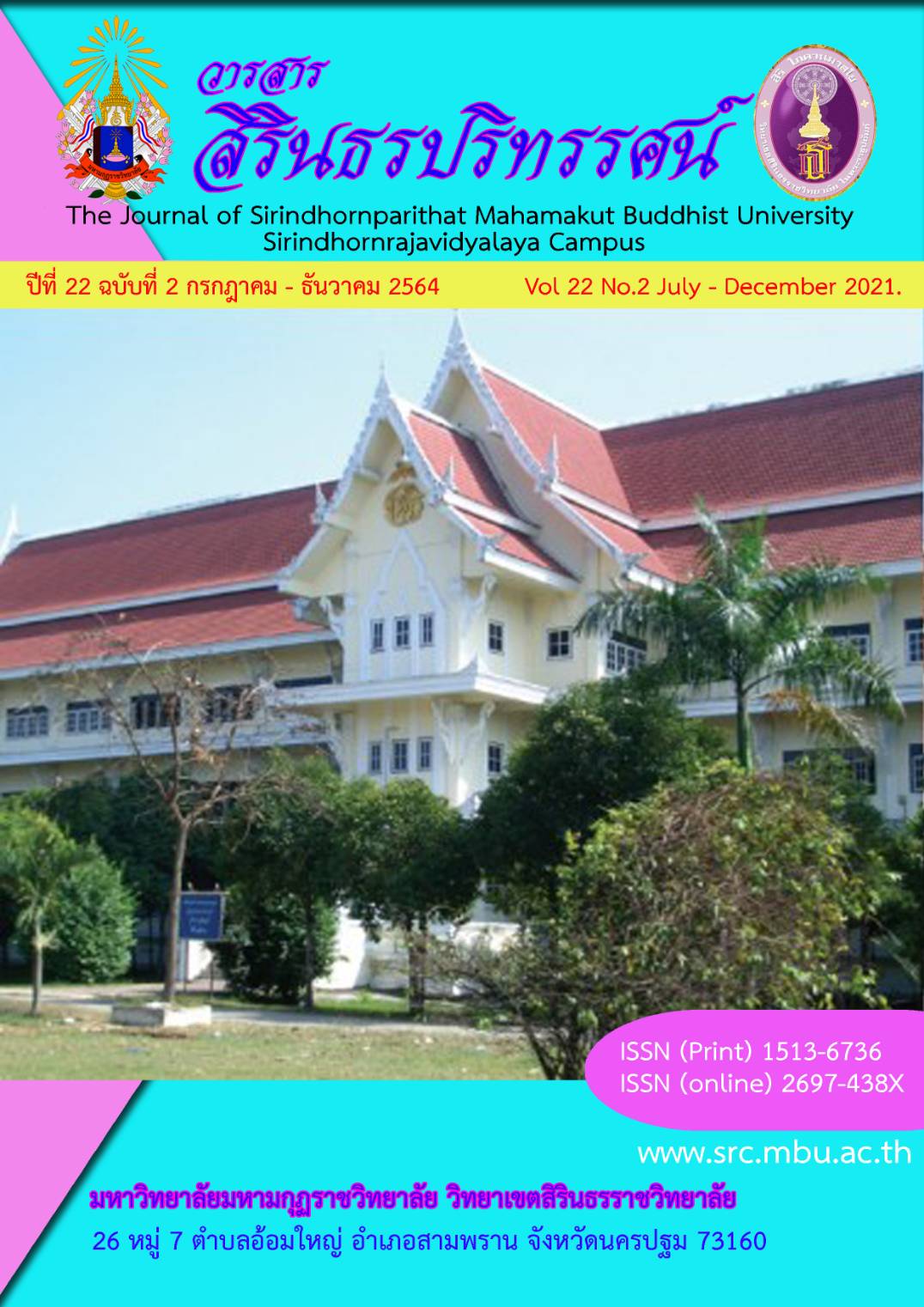THE GUIDELINES OF ADMINISTRATION OF BUDDHIST UNIVERSITY IN THE 21st CENTURY
Keywords:
Buddhist university, the 21st centuryAbstract
The objectives of this research are to study the state of Buddhist university administration in the 21st century and to propose the guidelines for Buddhist university administration in the 21st century. The descriptive research methodology was used in the study. The quantitative data were collected by questionnaires from 310 samples and analyzed by percentage, frequency, mean and standard deviation. The qualitative data were collected by interviews with 5 experts and then analyzed by content analysis.
The research results were found that:
1. The state of Buddhist university administration in the 21st century in 5 aspects was at a high level overall. In each aspect consideration, the highest level was on research and education innovation ,followed by general administration media, education administration, arts and culture conservation, and academic services to society respectively.
2. The guidelines for Buddhist university administration in the 21st century in 5 areas are as follows; 1) In general administration; the personnel should be trained in modern knowledge and skills, the use of technology in teaching and learning, learning media development and personality improvement. 2) In academic administration; the teaching and learning system should be related to technology and online system in order to enhance self-learning. 3) In research and innovation; there should be research fund and cooperation with the outsource network. 4) In academic services to society; to be the learning center of Buddhism for local and international levels, and 5) in arts and culture conservation, to propagate and restore arts and culture by integrating with teaching and learning activities and modern sciences.
References
ธราธร รัตนนฤมิตศร และประกาย ธีระวัฒนากุล.(2562).อนาคตของมหาวิทยาลัยไทยในศตวรรษที่ 21. [ออนไลน์].สืบค้นเมื่อ 6 เมษายน 2563.จาก https://www.bangkokbiznews.com/blog/ detail/647633.
ธานินทร์ ศิลป์จารุ.(2551).การวิเคราะห์ข้อมูลด้วยสถิติ SPSS, พิมพ์ครั้งที่ 9.กรุงเทพมหานคร: บริษัท เอส.อาร์.พริ้นติ้ง แมสโปรดักส์.
พระมหานุสรณ์ เสถียรดี,ธานี เกสทอง,(2558).“แนวทางการบริหารวิทยาลัยสงฆ์นครสวรรค์ มหาวิทยาลัยมหาจุฬาลงกรณ์ราชวิทยาลัย”.งานประชุมสัมมนาวิชาการการนำเสนองานวิจัยระดับชาติและนานาชาติเครือข่ายบัณฑิตศึกษา มหาวิทยาลัยราชภัฏภาคเหนือ ครั้งที่15.
พระเมธาวินัยรส (สุเทพ พุทธจรรยา).(2561).ยุทธศาสตร์การบริหารจัดการของมหาวิทยาลัยสงฆ์เพื่อรองรับประชาคมอาเซียน,วารสาร มจร. สังคมศาสตร์ปริทรรศน์,(ปีที่ 7 ฉบับที่ 1 มกราคม-มีนาคม 2561
วิจารณ์ พานิช.(2555).วิถีสร้างการเรียนรู้เพื่อศิษย์ในศตวรรษที่ 21.กรุงเทพมหานคร: ตถตาพับลิเคชั่น.
สาคร ธระที.(2556).การพัฒนาระบบการบริหารงานด้านวิชาการของมหาวิทยาลัยมหาจุฬาลงกรณราชวิทยาลัย, [ออนไลน์].สืบค้นเมื่อ 6 เมษายน 2563.จาก https://www.mcu.ac.th/article/detail/299
Downloads
Published
Issue
Section
License
Copyright (c) 2022 Mahamakut Buddhist University

This work is licensed under a Creative Commons Attribution-NonCommercial-NoDerivatives 4.0 International License.
บทความที่ได้รับการตีพิมพ์เป็นลิขสิทธิ์ของ มหาวิทยาลัยมหามกุฏราชวิทยาลัย วิทยาเขตสิรินธรราชวิทยาลัย
ข้อความที่ปรากฏในบทความแต่ละเรื่องในวารสารวิชาการเล่มนี้เป็นความคิดเห็นส่วนตัวของผู้เขียนแต่ละท่านไม่เกี่ยวข้องกับหาวิทยาลัยมหามกุฏราชวิทยาลัย วิทยาเขตสิรินธรราชวิทยาลัย และคณาจารย์ท่านอื่นๆในมหาวิทยาลัยฯ แต่อย่างใด ความรับผิดชอบองค์ประกอบทั้งหมดของบทความแต่ละเรื่องเป็นของผู้เขียนแต่ละท่าน หากมีความผิดพลาดใดๆ ผู้เขียนแต่ละท่านจะรับผิดชอบบทความของตนเองแต่ผู้เดียว




